Three Nebulae in One: Unravelling the Triple Identity of the Cosmic Cocoon
A deep dive into IC 5146. Our Summer challenge target 13, where new stars are wrapped in a stunning tapestry of gas and dust.

Tonight, we're focusing on a target 3,200 light-years away in the constellation Cygnus the Swan 🦢. In mythology, this constellation represents Zeus himself, transformed into a graceful swan while on a secret mission to win the heart of Queen Leda. This celestial swan flies through a region packed with cosmic treasures, from the ghostly remnants of a supernova in the Veil Nebula to the continent-shaped clouds of the North America Nebula. Tucked away amongst these famous sights is a more intimate, but equally breathtaking stellar nursery: the Cocoon Nebula. Like a phantom in the cosmic dark, this beautiful object isn't just one type of structure—it's a celestial masterpiece, showcasing three types of nebulae in a single view.
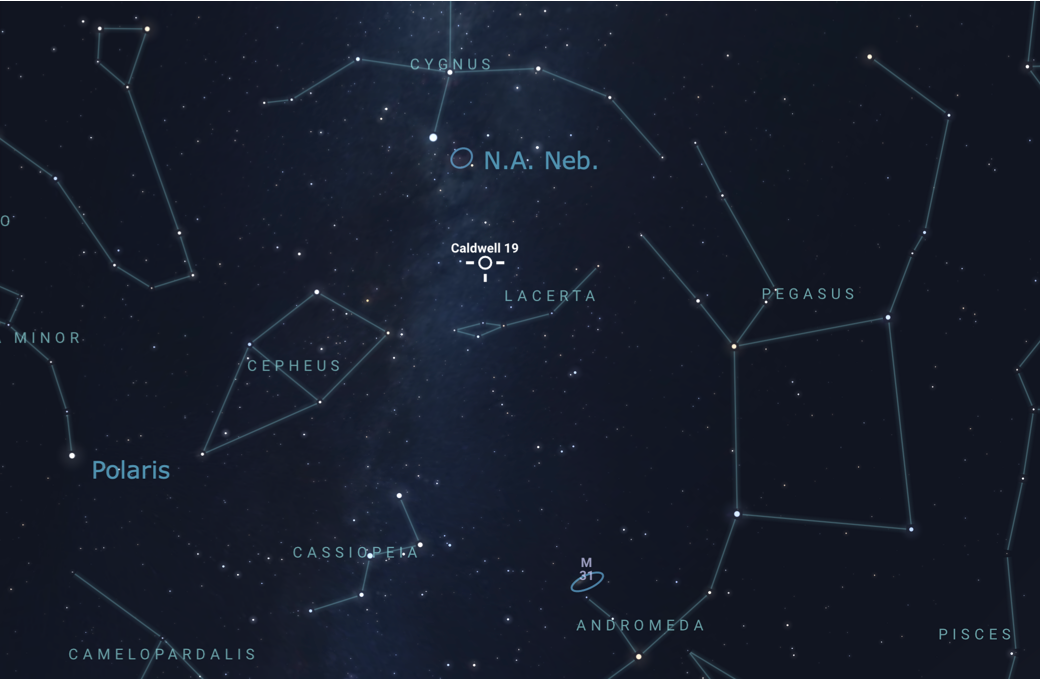
A Celestial Masterpiece
The Engine Room of Creation
What makes this cosmic cloud so captivating is that we are peering into an active workshop of creation. At its heart lies a young, open star cluster known as IC 5146, which contains hundreds of newly formed stars that ignited only about 100,000 years ago.
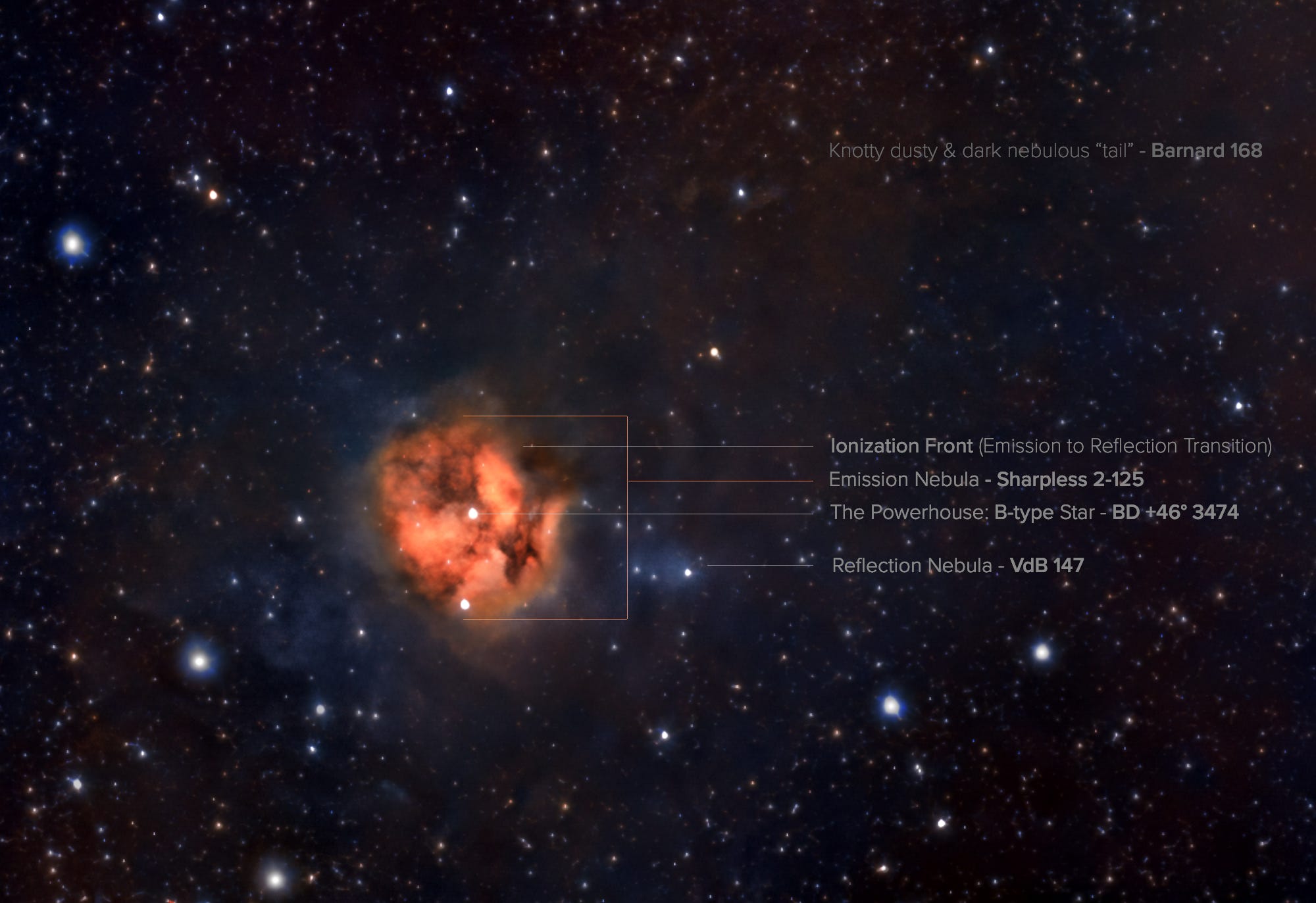
A Star in Disguise
While the cluster is vast, the nebula's spectacular glow is powered almost entirely by the fierce energy of its central, most massive member—a hot, young B-type star designated BD +46° 3474. Scientifically, this massive star is a scorching hot, blue-white giant with a surface temperature well over 10,000 K. So why does it appear yellow in our image? We are viewing it through a veil of interstellar dust within the nebula itself. This dust scatters the star's blue light, allowing more of its yellow and red light to reach our scopes—an effect known as "interstellar reddening."
Want to try your hand at processing the same data? Consider becoming a paying subscriber to access the complete, raw data files used in this article, as well as our SIRIL-processed files with the stars removed.
Painting the Canvas Red
The intense temperature of this single, powerful star causes it to unleash a torrent of high-energy ultraviolet (UV) radiation. This flood of UV photons is so powerful that it strips the electrons from the surrounding hydrogen atoms, creating a vast, glowing bubble of ionized gas known as an H II region. When these electrons eventually recombine with the hydrogen, they release energy as light, painting the nebula with its characteristic ruby-red glow. This classic emission nebula (also catalogued as Sharpless 2-125) is the glowing heart of the cocoon structure.
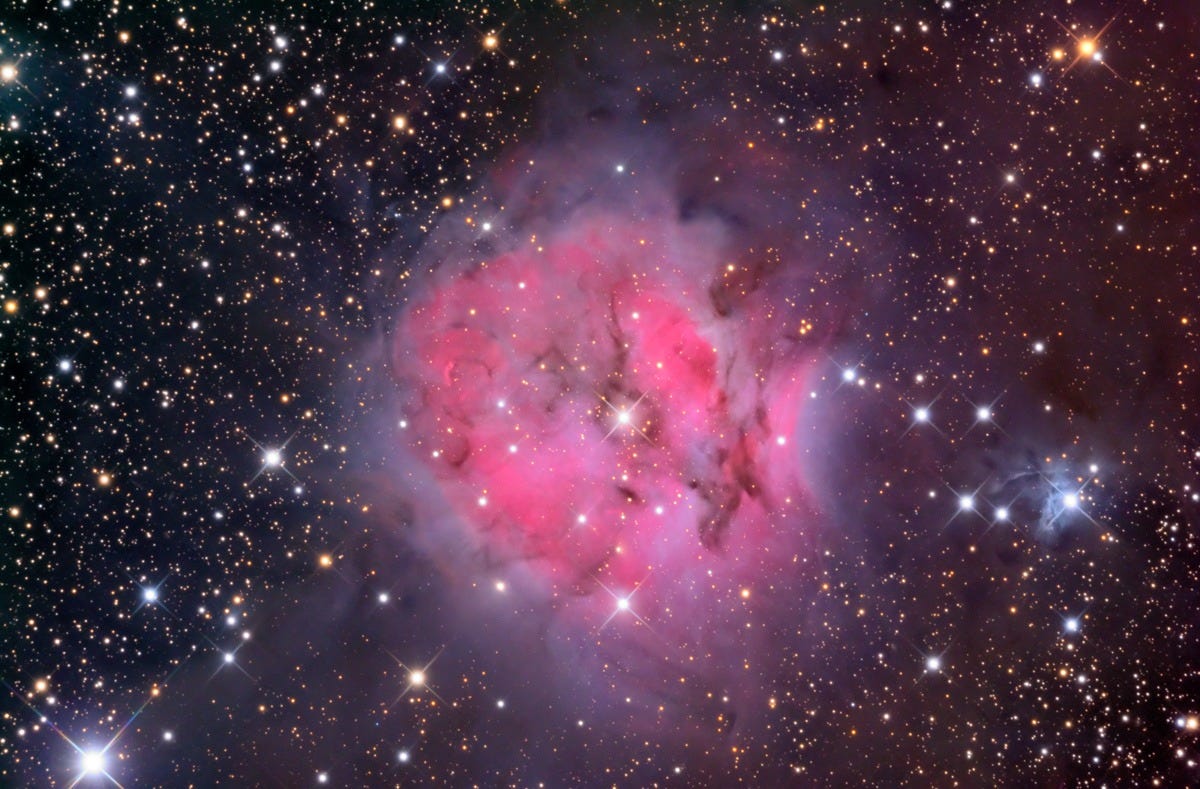
A Bubble Carved from Within
The tormented, chaotic appearance of this central region is a direct result of the newborn stars that inhabit it. Powerful stellar winds and intense radiation from the central star blast outwards in all directions, creating a distinct Ionization Front—the boundary of a bubble-like cavity within the denser molecular cloud. What we see is like looking into this bubble with one side removed, witnessing the star actively clearing out its own stellar nursery. The nebula gets its "Cocoon" name from this very structure, where the bright, young star cluster appears to be wrapped within the dense, dark, dusty filaments, much like a pupa developing inside a protective cocoon.
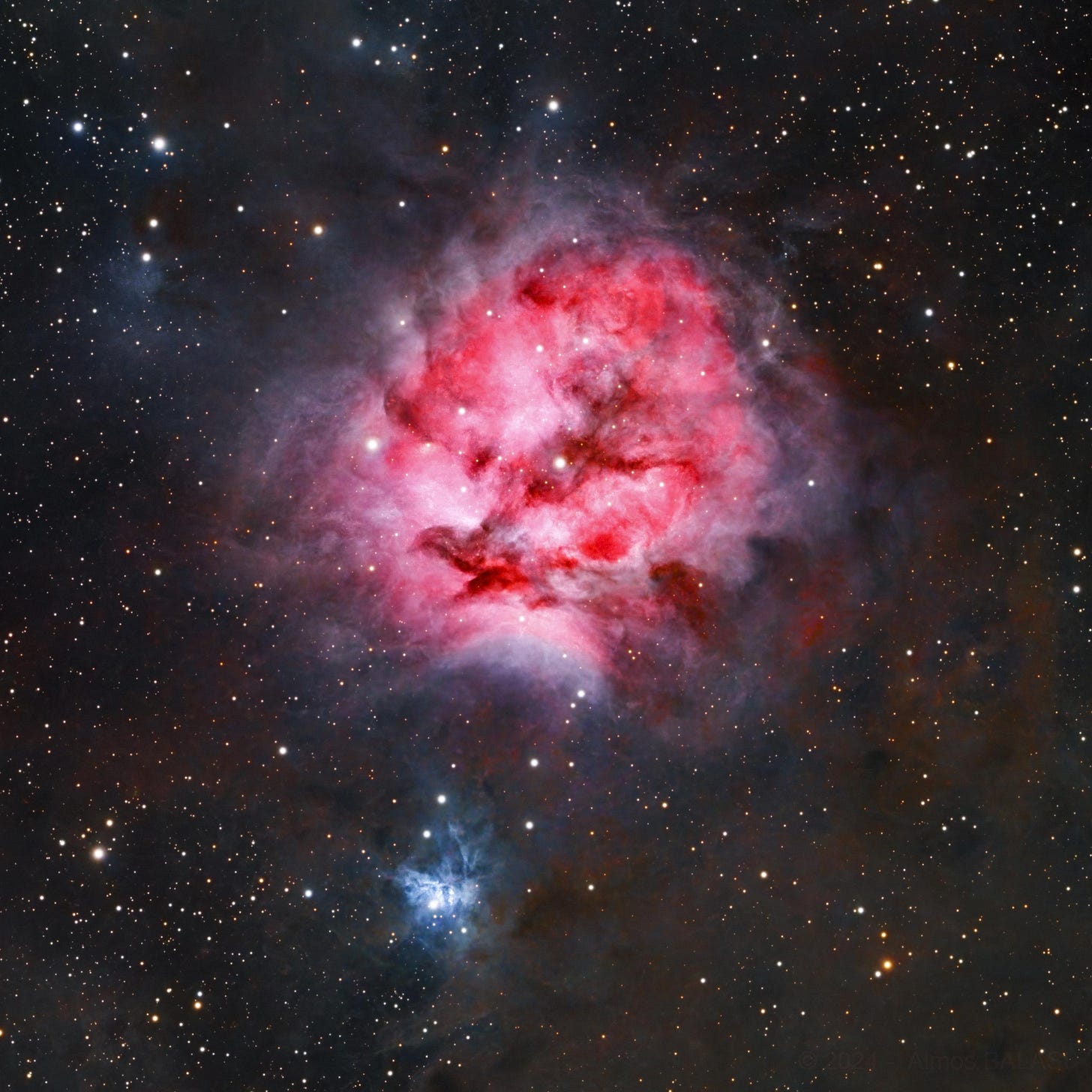
A Tapestry of Light and Shadow
But the story doesn't end there, and the physics gets even more interesting. The scene is shrouded in vast clouds of cold dust that create two different effects. Where the dust is close enough to the central star, its light simply scatters off the fine particles. Because blue light scatters more efficiently, this creates the faint, ghostly shimmer of a reflection nebula (catalogued as vdB 147). Further out, where the dust cloud becomes incredibly dense, it forms an absorption nebula that is so thick it completely blocks the light from stars behind it. This creates the long, snaking river of darkness that trails the Cocoon, a feature so prominent it has its own designation: Barnard 168, which stretches for an incredible 10 light-years.
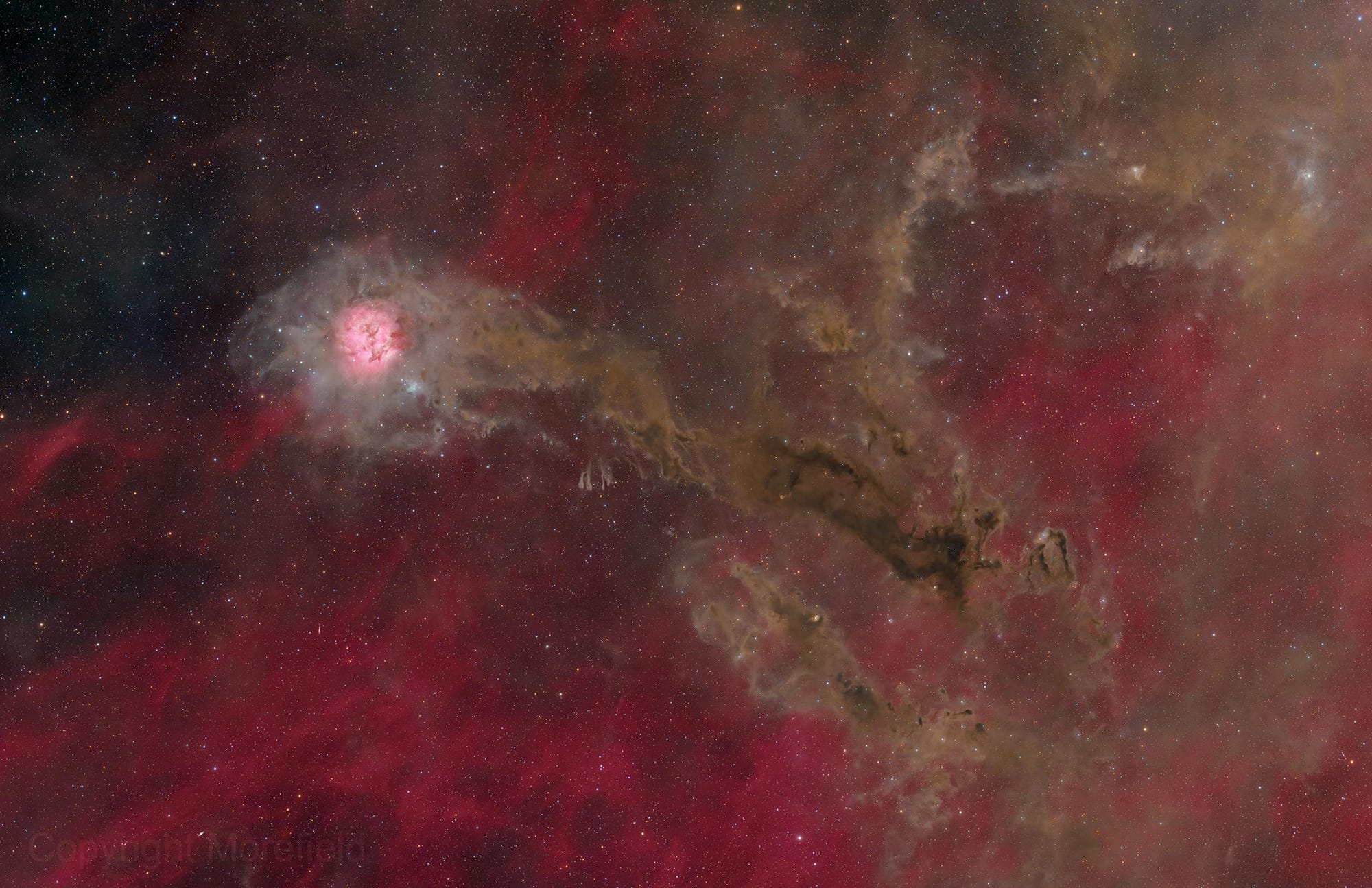
An Object of Many Names
This single object is a perfect example of how astronomers catalogue the sky. Depending on what you're looking at, it has a different name:
IC 5146 / Collinder 470: For the young star cluster within.
Sharpless 2-125: For the glowing red emission gas.
vdB 147: For the blue reflection nebulosity.
Barnard 168: For the long, dark nebula trailing behind it.
Caldwell 19: The designation given by Sir Patrick Moore for amateur astronomers.
Spanning about 15 light-years, the Cocoon Nebula is a place of violent beauty and silent creation, where hundreds of new stars are being forged in the very heart of those shadowy columns. It's a stunning reminder that in the darkest corners of the cosmos, the universe is always busy weaving new light.
✨ Clear Skies - Duncan from DwarfVision
Paying subscriber bonuses are below the paywall!
All our Cocoon data, including D3 ASTRO and DUALBAND stacks - 800 total usable lights
Numerous SIRIL Processed Stacks as .fit & .PNG files ready for you to rock and roll with to practice, perfect, or enhance your captures!
Our Photoshop files to explore our workflow
Our thanks and dedication to you, to help you get the most out of your post-processing adventures!
Keep reading with a 7-day free trial
Subscribe to DwarfVision to keep reading this post and get 7 days of free access to the full post archives.


